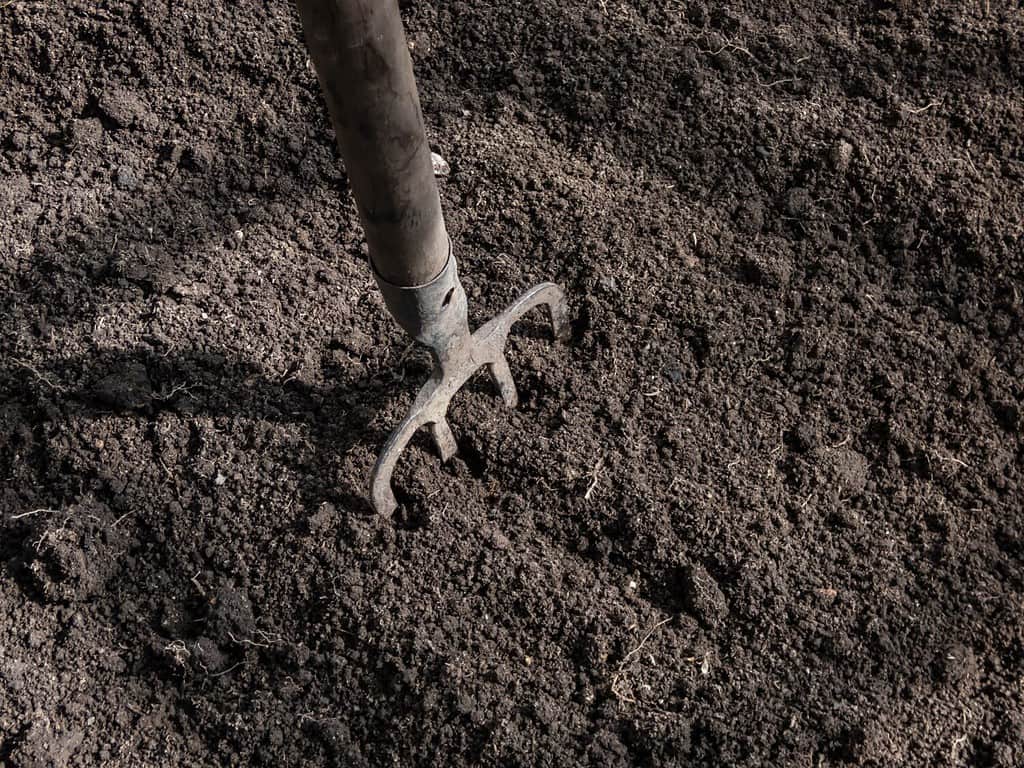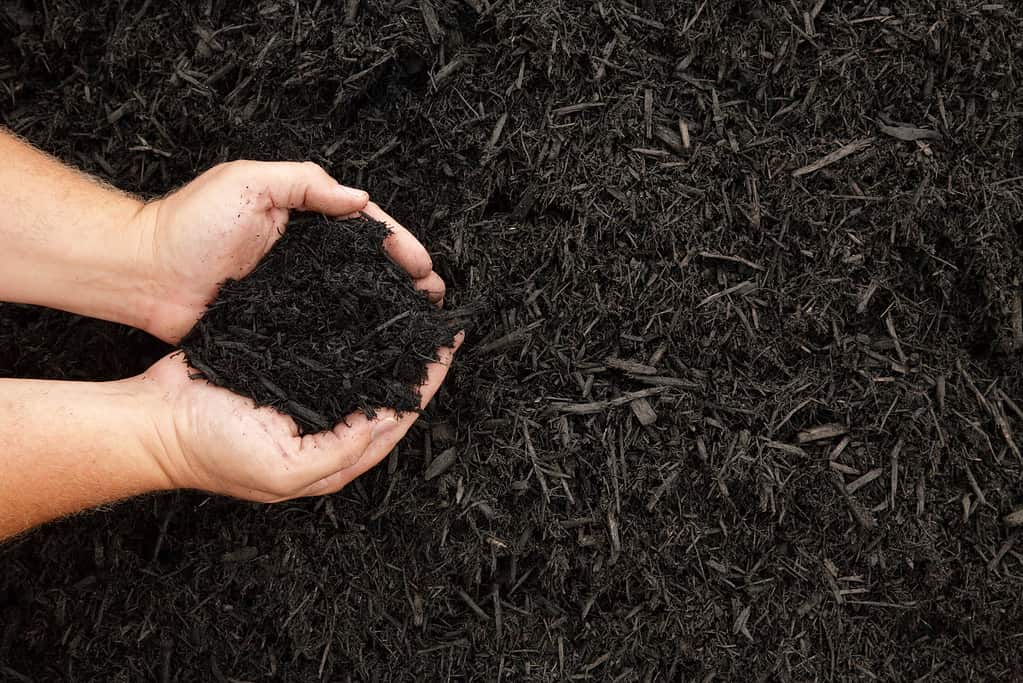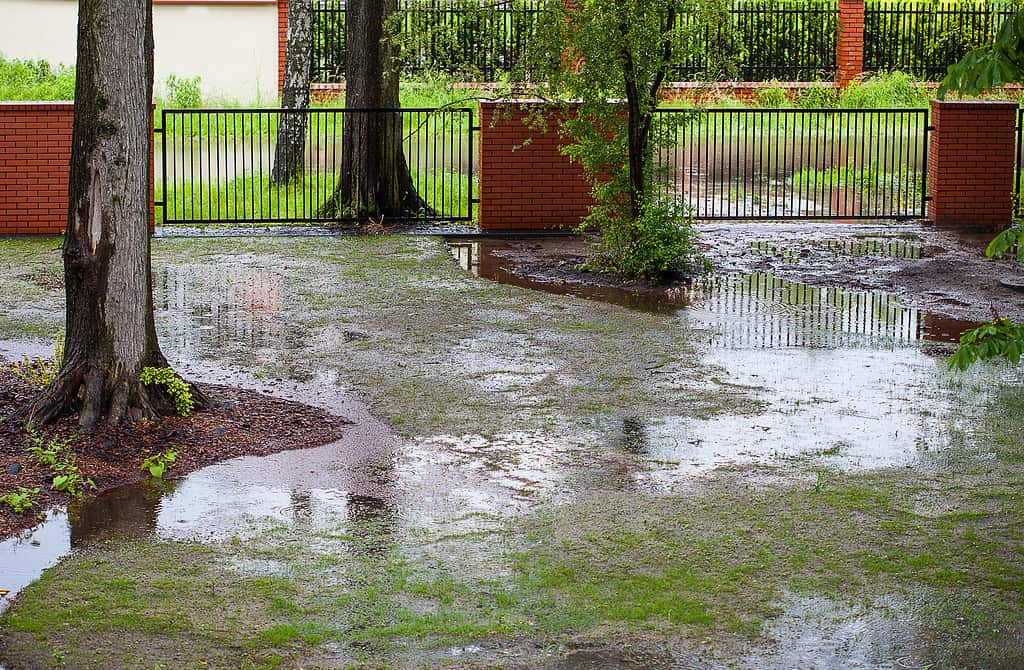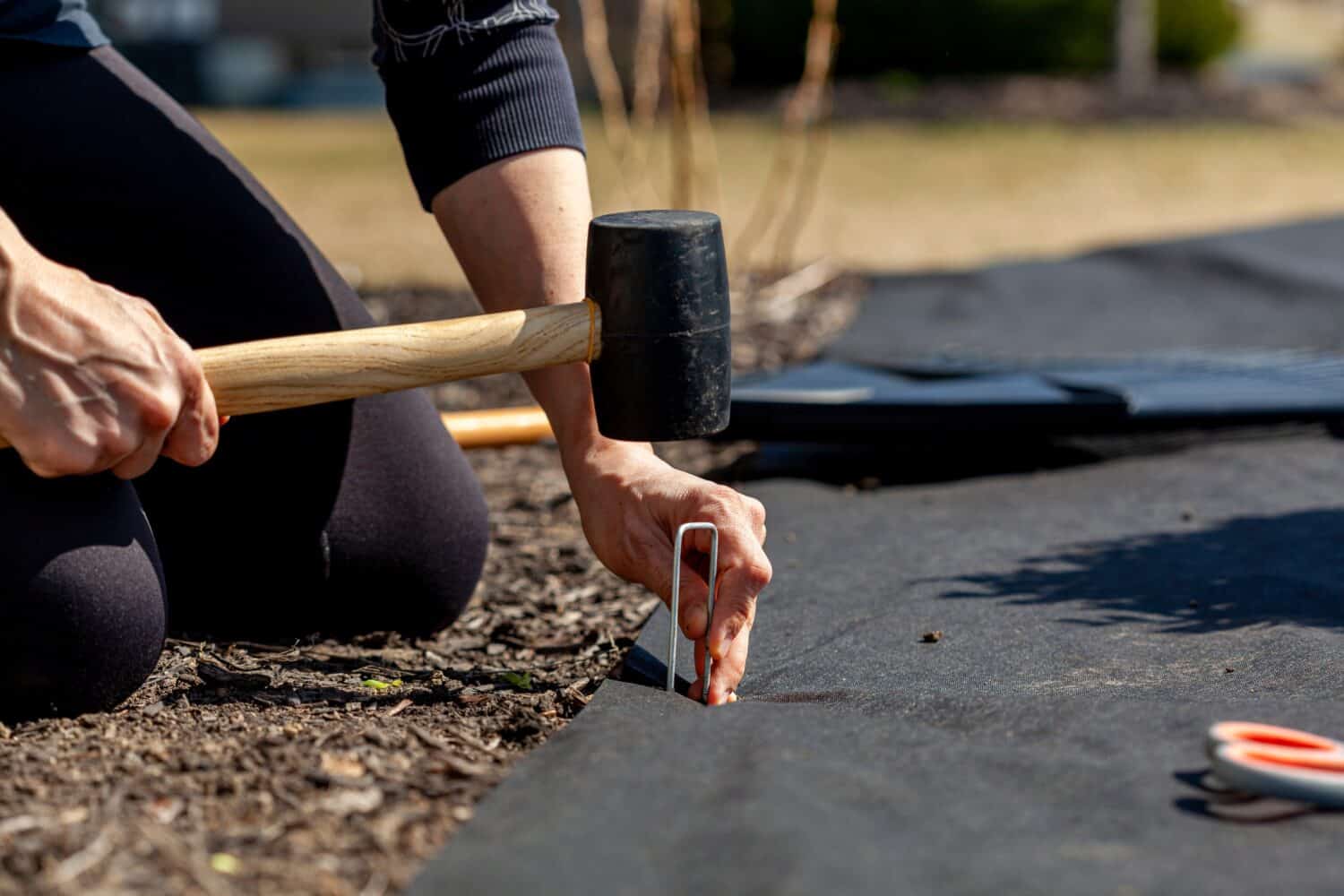Magic pills and short-term fixes sound like ideal shortcuts. While something like landscape fabric can appear to solve all your weed problems, it’s not quite a quick fix. While the initial results may have you feeling like you made a good choice, the work that comes down the road may dissuade you from making the same mistake again. Your yard doesn’t function the same when you place a covering over it. Discover six reasons you should never lay landscape fabric in your yard! You’ll learn it’s just not worth it.

What Is Landscape Fabric?
Landscape fabric is a special kind of material used in yards and gardens to control weeds. The idea behind using landscape fabric is that it inhibits sunlight, consequently preventing weed growth. Landscape fabric is available in different types of materials. Some may be organic while others are synthetic. Ultimately, no matter what material it’s made from, it serves as a barrier placed over your soil.

Landscape fabric is also known as weed control fabric.
©photowind/Shutterstock.com
6 Reasons You Should Never Lay Landscape Fabric in Your Yard
1. It Doesn’t Keep Weeds Away

Fabric does not fully stop weeds from growing.
©Joshua Boman/Shutterstock.com
Landscape fabric, also known as weed control fabric, doesn’t exactly do what you might think. Although it may be marketed as a product that can help suppress weed growth in your yard, that’s only a half-truth. Initially, you may think it’s doing its job. You won’t see as many weeds. But give it time. Organic matter eventually accumulates and yet again creates an environment where weeds can thrive. Landscape fabric is simply not a solution to weeds.
2. It Makes Planting Harder

Landscape fabric makes planting and transplanting a nightmare.
©Virrage Images/Shutterstock.com
If you plan to make any changes to your yard or garden, adding new plants or dividing the ones you already have, landscape fabric makes your work that much more difficult. Not only do you not have direct access to your soil, but you also have to carefully cut through the fabric to make any desired changes. Even transplanting can be a headache as the roots of some plants may intertwine with the landscape fabric.
3. You Fail to Support a Healthy Environment

Fabric can stifle healthy soil.
©Kristine Rad/Shutterstock.com
When soil is healthy, it allows for airflow and retains moisture. This type of environment requires your care and consistency. Draping landscape fabric over your yard ruins the possibility of creating a healthy environment in your soil and for your plants. You lose access to the soil, both visually and physically. This puts you in a restricted position as you can’t support the health of the soil or your plants. You may think the mesh is helpful and that it can assist with retaining moisture. But over time, it all gets clogged, even keeping earthworms and other necessary organisms from doing their jobs.
4. It Doesn’t Work With Organic Mulch

Landscape fabric doesn’t work with organic mulch.
©iStock.com/witmerphotography
Organic mulch should decompose over time but when you place it on top of landscape fabric, you create an issue. It doesn’t decompose in the way it’s meant to and transforms into a sturdy block. To keep your yard and garden healthy, you should replace organic mulch annually. With the covering over your soil, you prevent all of the necessary processes of your yard and garden from happening, creating bottlenecks that cause further issues down the road.
5. It’s Not As Aesthetically Pleasing As You Think

Landscape fabric comes with cosmetic faults.
©Jon Rehg/Shutterstock.com
Nature has its own methods of being beautiful. Placing landscape fabric over a natural area that is supposed to thrive on its own looks awful. Trying to pin it all down during the first application is labor intensive and if you live in an area with windy days, you’re likely to find yourself frustrated as you watch it blow in the wind, forcing you outside to keep it down.
6. Water Can’t Reach Your Plant’s Roots

Water can pool up after heavy rain in yards that use a lot of landscape fabric.
©KatarzynaBialasiewicz/iStock via Getty Images
When you use landscape fabric, you’re placing a barrier over your soil. For your plants to thrive, they need healthy soil and water. You can’t keep an eye on the health of your soil and when you water your plants, the water can’t reach your plant’s roots. You’re creating a disaster in a garden or yard when you use landscape fabric. Instead of picking a seemingly simple fix for weed control, you create a whole host of problems that you have to work out down the road. Keeping your yard and garden healthy requires work, but it pays off when you put the proper care and time into it. It gifts you with a flourishing natural environment you can appreciate and gives your home fantastic curb appeal.
Summary of 6 Reasons You Should Never Lay Landscape Fabric in Your Yard
| Number | Reason Not To Lay Fabric |
|---|---|
| 1 | It Doesn’t Keep Weeds Away |
| 2 | It Makes Planting Harder |
| 3 | You Fail to Support a Healthy Environment |
| 4 | It Doesn’t Work With Organic Mulch |
| 5 | It’s Not As Aesthetically Pleasing As You Think |
| 6 | Water Can’t Reach Your Plant’s Roots |
Thank you for reading! Have some feedback for us? Contact the AZ Animals editorial team.








